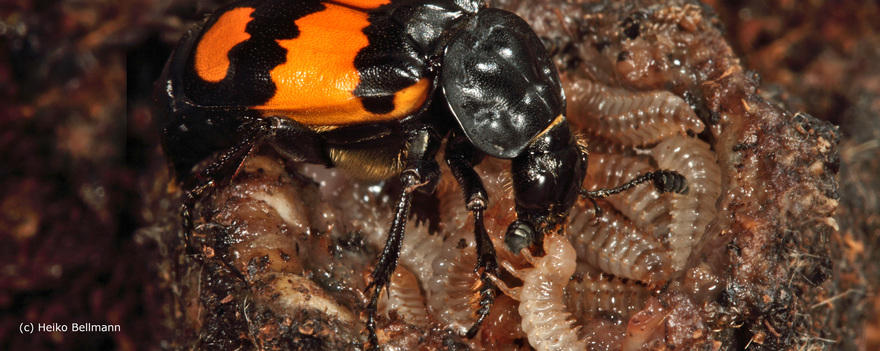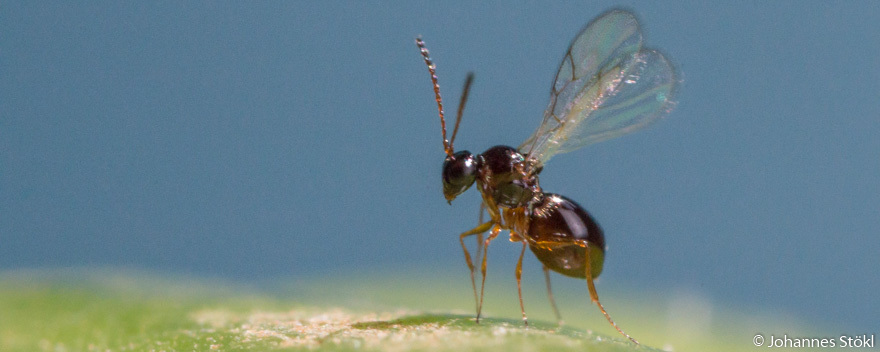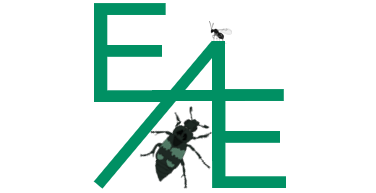Evolutionary Ecology - Behavioural Ecology - Chemical Ecology
Family life
Family life is of central importance for human societies. However, this is not a unique feature of humans. Many animals live, at least temporary, in family units and parents or siblings care for new-borns. We are fascinated by the diversity of family lifestyles and seek to understand how family living evolves, how it shapes the behaviour and other traits of the family members and which ecological factors impact family living and vice versa. As a matter of fact, we are interested in all aspects of family living in animals, from molecules to behaviour to ecosystems.
Our main model organisms are burying beetles (Nicrophorus spp.), which exhibit elaborate parental care. We are intrigued by their behaviour and fascinated by their adaptations to a temporary life in families.

Communication
Animals communicate everywhere, all around us. Sometimes we can hear, see and smell it, but often our sensory system is not tuned to detect the signals. Moreover, we usually do not know what kind of information is transferred and who is the receiver. The oldest and most widespread form of communication is chemical communication. We are fascinated by the diversity of chemical signals and seek to understand their evolution, information content, perception and their role in animal interactions. Moreover, animals secrete a wide range of substances, which can have other functions than communication. They can be used in defence against predators, competitors or pathogens, be of nutritional value or otherwise manipulate the physiology of con- or heterospecifics. Identifying and understanding these additional functions is also part of our research. Apart from chemical communication, we are also interested in other modes of communication, such as vibrational communication.
For our studies we use a range of insects as model organisms, including parasitic wasps, bees and burying beetles.
Parasite-host interactions
The larvae of parasitic insects develop inside a host (usually other insects or spiders), many of them eventually killing the host. We are fascinated by the many adaptations of parasite and host emerging from this evolutionary arms race. Parasitic insects are furthermore considered key organisms in both natural and agricultural ecosystems, for their role in ecosystem services and biological pest control.
We study the parasite-host interactions in parasitoid wasps of Drosophila.


